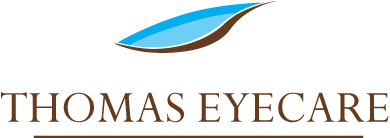The removal of the natural lens of the eye that has developed an opacification, which is referred to as a cataract. During cataract surgery, a patient’s cloudy natural lens is removed and replaced with a synthetic lens to restore the lens’s transparency. The operation is minimally invasive with quick post-op recovery and is performed as an outpatient procedure.
Visit our section on Diseases and Conditions to learn more about Cataracts.
Intraocular Lens Implants (IOL)
Twenty-five years ago the usual treatment for cataracts was removal of the clouded lens followed by wearing glasses with very thick lenses, while Presbyopia required the use of reading glasses. Today, due to the amazing advancements in IOL technology over the past two decades, a patient can typically hope for and achieve good to excellent vision quality from a lens implant without the need for, or minimal need for glasses. Depending on the type selected, an IOL can also correct the eye’s existing refractive error (myopia or hyperopia). An IOL is an implanted synthetic lens that replaces the eye’s natural lens. The type of IOL determines the quality of vision improvement. After performing a comprehensive examination, Dr. Thomas counsels each patient about his or her best IOL option according to lifestyle, medical and eye health history
Premium Lens Options
When it comes to selecting your intraocular lens, Dr. Thomas and his staff offer a variety of exciting lens options available to you. Our premium lenses are recommended based on your individual lifestyle needs, wants and desires.
Deluxe Monofocal Lenses
These types of intraocular lenses have one focal power, much like single-vision glasses (not bifocals). Patients have the option of selecting near or distance vision, depending on their needs. The deluxe monofocal lenses we offer to our patients are excellent lenses and provide precision optical quality for the sharpest vision possible. Many people feel they see better than they ever have after having cataract surgery after we correct for their pre-existing errors of myopia or hyperopia.
Premium IOL (Multifocal and Toric Lenses)
Dr. Thomas uses the most advanced lens technology available and tailors it to each patient’s specific needs. Our multifocal and toric lenses are implants that offer patients the very latest technology, affording maximum independence from glasses. In practical terms, they allow patients to see far and near. Glasses may be required to fine tune vision; however, these lenses are the best option for creating freedom from glasses or contacts.
Astigmatism Lenses versus Limbal Relaxing Incisions (LRI)
For patients found to have astigmatism, there are lenses or surgical procedures that can reduce or eliminate this problem. Dr. Thomas will discuss the option of corneal incisions (LRI’s) placed at the time of cataract surgery to reshape the cornea and rid a patient of their corneal astigmatism. An LRI can be done along with the implantation of a premium IOL or a deluxe monofocal IOL. If astigmatism is not treated during cataract surgery, a patient’s post-op vision will be blurred unless glasses or contacts are used.
Limbal Relaxing Incisions (LRI) are a refractive surgical procedure to correct minor astigmatism in the eye. Incisions are made at the opposite edges of the cornea, following the curve of the iris, causing a slight flattening of the cornea. These incisions do not cause glare and other visual effects that result from other corneal surgeries like Radial Keratotomy.
Secondary Cataracts
The natural lens of the eye is situated in an elastic-like capsular bag that holds it in place. When performing cataract surgery, the front portion of the capsule is opened in order to remove the lens. After completely removing the natural lens, the intraocular lens is positioned inside the capsular bag. The capsule holds the intraocular lens and serves as a protective barrier for the back of the eye.
Following cataract surgery, the capsule may produce cloudy cells that typically cause blurry vision. Some patients may also experience glare problems when driving at night. This common condition, known as a posterior capsular opacity (secondary cataract), occurs in approximately 25% of patients who undergo cataract surgery. Posterior capsular opacity may occur months or years postoperatively.
Posterior capsular opacity can be simply treated using a YAG laser. Dilating drops are instilled and the laser is used to create an opening in the center of the cloudy capsule. Most patients notice an instant improvement in their vision, while others experience a gradual improvement over several days. YAG capsulotomy is an outpatient procedure and takes just minutes to perform.
 The femtosecond laser technology that brought new levels of safety, accuracy and predictability to LASIK surgery is also advancing cataract surgery.
The femtosecond laser technology that brought new levels of safety, accuracy and predictability to LASIK surgery is also advancing cataract surgery.
In laser cataract surgery, an advanced Femstosecond laser replaces or assists use of a hand-held surgical tool for the following steps in cataract surgery:
- The corneal incision
- The anterior capsulotomy
- Lens and cataract fragmentation
Use of a laser can improve the precision, accuracy and reproducibility of each of these steps, potentially reducing risks and improving visual outcomes of cataract surgery.
Cost Of Laser Cataract Surgery
Refractive laser-assisted cataract surgery costs more than conventional options. The laser itself can cost the surgeon approximately $300,000 to $500,000, and additional costs are associated with using and maintaining the device.
Extra costs associated with laser cataract surgery are unlikely to be covered by Medicare or private health insurance. Fees vary from one cataract surgeon to another, but it is likely you would pay hundreds of dollars extra per eye out-of-pocket for a laser-assisted procedure.
Cataract surgeons who use lasers say that their advantages are especially evident when it comes to high-tech, premium implants such as presbyopia-correcting multifocal IOLs and accommodating IOLs. The advantages can include better lens placement and therefore more accurate visual outcomes.
Conclusion
It is important to put this new technology into proper perspective. Traditional cataract surgery is very effective and successful. People who do not want to invest out-of-pocket money in laser cataract surgery can still feel confident about the traditional approach.
But if you want the best possible vision, laser cataract surgery is appealing. A more accurate incision, capsulotomy and astigmatic correction may help you achieve your goal of less dependence on glasses after cataract surgery.
To decide if laser cataract surgery is the best choice for you, ask Dr. Thomas for more information about this exciting technology during your preoperative exam and consultation.
Catalys
The Catalys Precision Laser System (Abbott Medical Optics) is FDA-approved for the three primary steps prior to IOL insertion in laser cataract surgery (corneal incision, capsulotomy and lens fragmentation). The Catalys system also features a liquid optics interface that provides gentle docking of the laser to the eye, reducing risks associated with high eye pressureBottom of Form during laser cataract surgery, according to AMO.
